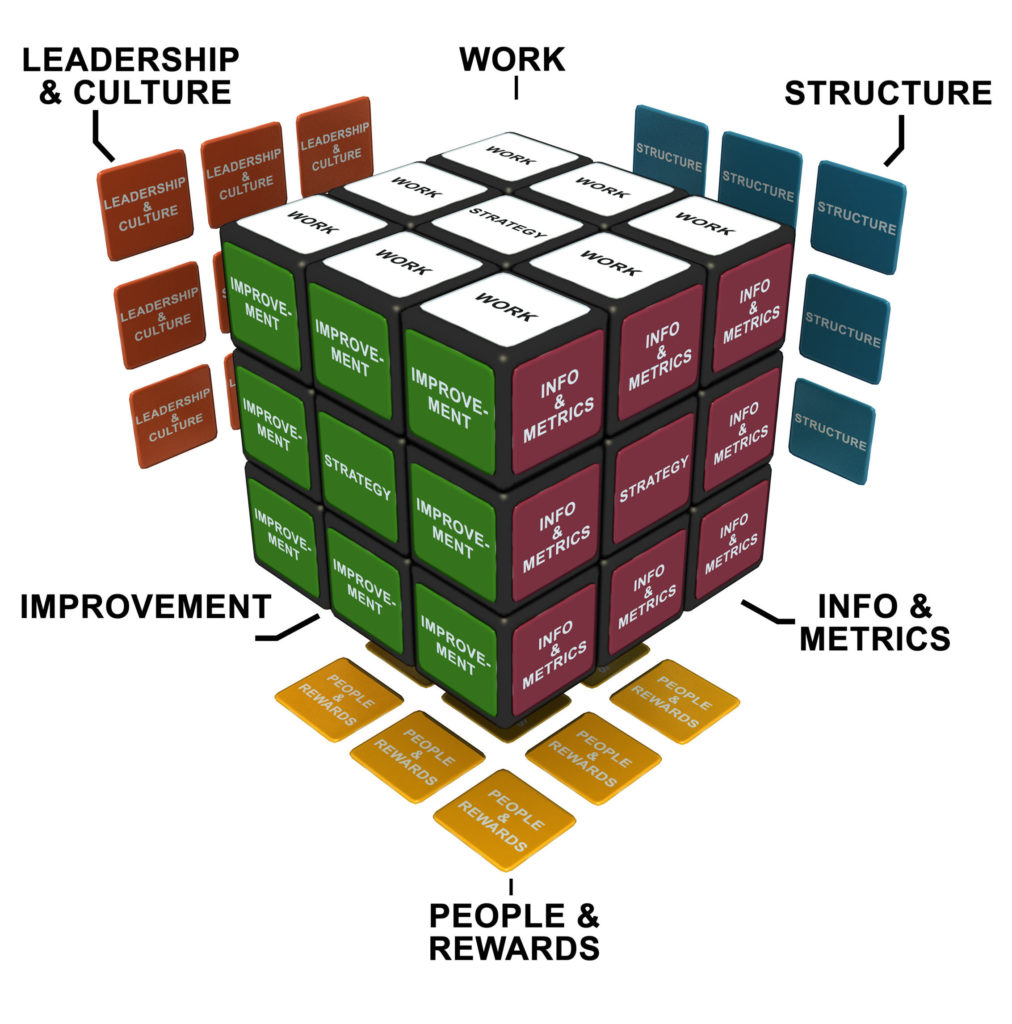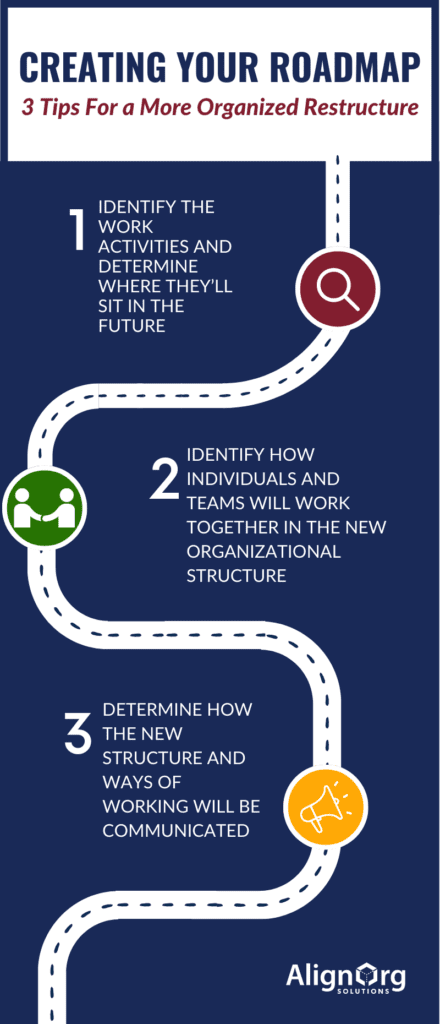I was recently chatting with a close friend who shared that her team is preparing to reorganize again because their new structure isn’t achieving its intended outcomes. She sounded frustrated. She and her peers had just spent the past six months figuring out their evolving roles and new ways of working together. They’d been given no roadmap, just a new reporting structure and they’d been figuring it out ever since. In her mind, things were finally becoming clear.
Why did this take six months to figure out? How could the leaders who created this new structure have provided the needed clarity from the very beginning? The answer is that they could have gotten organized about the implementation and not just focused on the introduction of the future-state org structure.
As you begin the work of restructuring, there are a few steps you can take to get organized. To borrow from Stephen Covey’s 7 Habits of Highly Effective People, ensure you are “beginning with the end in mind.”
For organization redesign, the end to have in mind is the successful implementation of a design that achieves strategic objectives and leads to measurable business results. A critical part of this is ensuring people are prepared for and informed about what is changing as they step into the future-state organization.
Three tips for getting organized to ensure a successful restructure
1. Identify the work activities and where they’ll sit in the future
The work is a key part of what needs to be shared with people so they can understand the future organization and their place in it. What work is changing? Is some work moving to another person or team? Is some work no longer needed and should be stopped altogether?
2. Identify how individuals and teams will work together in the new organizational structure
Linkages are mechanisms that facilitate information sharing and work coordination across teams. We can use linkages to mitigate the downsides of the formal structure. Defining these upfront increases productivity in the new structure because people don’t have to figure it out on their own. The linkages are already defined for them. You’ll need to answer questions like, “How will information be exchanged? Are there key processes or handoff points that need to be identified?”
3. Determine how the new structure and ways of working will be communicated to employees
There is no substitute for a good change management plan during restructuring. You must consider many elements when creating your communication plan. For example, what do employees need to know about their changing work? What is the timeframe of when things will change? How will they be trained in new skills they need if work is added? When will deprioritized work activities cease? How will work be transitioned to the new person or team and what is their role in that transition?
Using the AlignOrg Method
For decades, we’ve been applying the AlignOrg Method to the redesign process. This methodology promotes the inclusion of the people closest to the work and encourages having transparent discussions and even debates about what will set an organization apart from its competitors. It utilizes our Cube Model to ensure that all facets of the organization are aligned to achieve the strategic objectives.

Structure is just one side of the cube. You must also consider linkages to other groups, clarity on what work sits where, and how different roles work together. These are all the things my friend and her peers were trying to work through after the structural changes were announced six months ago. Instead of working to fill in the gaps of a new structure, they could have quickly stepped into their new roles and ways of working together.
To leaders who are considering reorganization, if you’ve started redrawing boxes, I’d encourage you to pause and consider how to best get organized around the cube to achieve a successful restructure. Otherwise, you just may be redrawing those boxes again in a few months.






